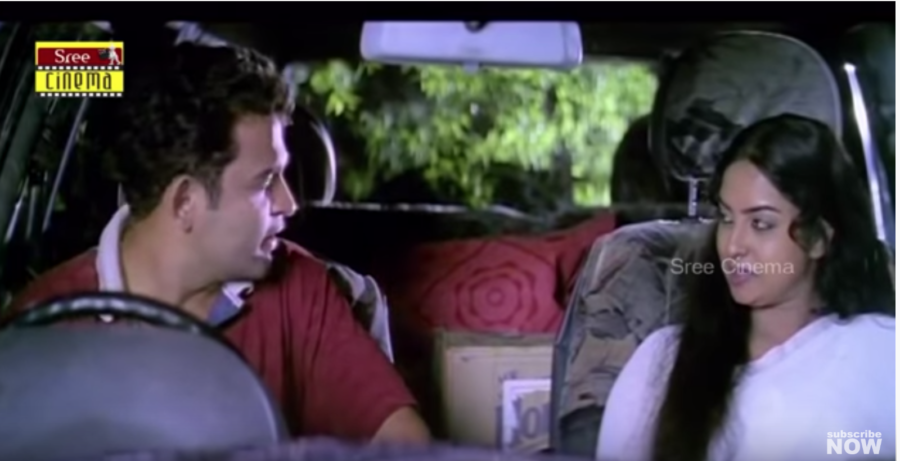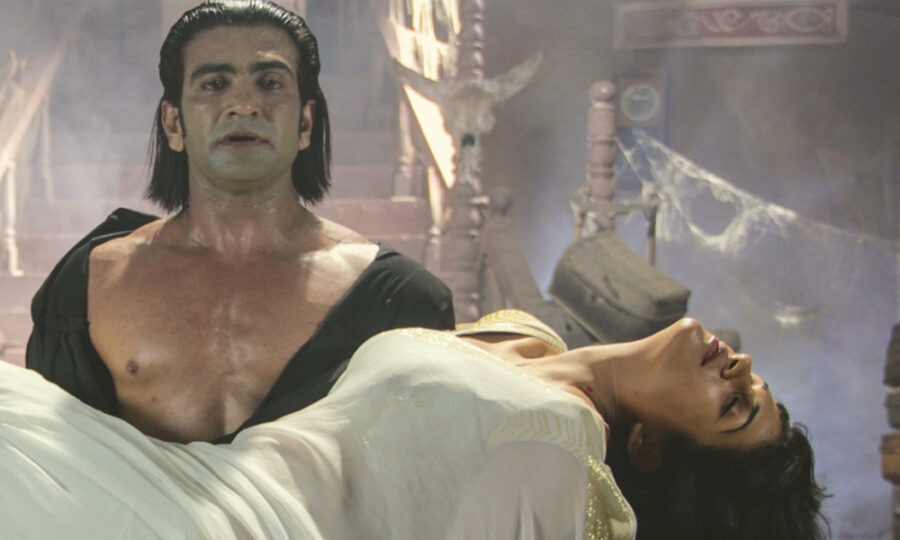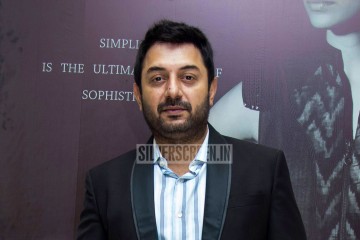One of the most intricate and fascinating horror-dramas in India was made in Malayalam cinema. Fazil-Madhu Muttom duo’s Manichithrathazhu (1993) made fantastic use of the tropes of horror and psychological genres. The film was remade in different Indian languages including Tamil and Hindi, and has garnered a cult following over the years. The history of horror genre in Malayalam cinema dates back to the black and white era, when Vincent adapted writer Vaikom Mohammad Basheer’s Bhargavinilayam (1964) featuring Madhu, Prem Nazir and Vijaya Nirmala in the lead roles. The film narrates the tale of a house haunted by the spirit of a wronged woman – a plot trope that never gets old.
In 1978, director AG Baby made Lisa, the first of the long list of horror entertainers he made until 1991. Interestingly, the techniques and motifs that he employed in his film such as semi-erotic song sequences, monster faces, black cats and barking dogs continue to be used by commercial filmmakers till today. If horror is one of the most under-explored genres in Malayalam cinema, it’s because the local horror film makers have rarely dared to move out of the camp Baby created in the 80s that resembles the one that Ramsay Brothers made in Hindi.
Here is a list of some of the most (unintentionally) entertaining B-grade horror films in Malayalam that features kitschy production design, bad acting and the most bizarre plot points.
Dracula 3D (2012)
This film, directed by Vinayan, easily tops the list. A newly-wed couple from Kerala travels to Romania to spend their honeymoon exploring the Transylvanian castle. The good husband leaves his wife in hotel room and goes to perform witchcraft – which is apparently his passion – in an abandoned bungalow. Big mistake. Dracula 3D isn’t just the first Malayalam horror film in 3D, but it might also be the first film to feature the Count Dracula as a hairy monster who does desi stunts.
To director Vinayan’s credit, he made this film at a time he was ostracised by the trade unions in Malayalam film industry. In Dracula as well as his previous film, Yakshiyum Njanum, Vinayan employs the hit tropes and techniques that he used in Aakashaganga (1999), a horror film that inarguably made his career – there are totally unreasonable scenes involving young women in bathrobes, comedians with abysmal sense of humour, and convoluted plot points.
Here, it is not just the tacky and shabby production design and poor directorial choices that causes the damage. The cast, largely made up of new actors, deliver outrageously bad performances which is further ruined by terrible dubbing.
When the husband goes missing, the wife panics, but she doesn’t seem as panicky as she should be when the missing man appears out of the blue inside her washroom while she is taking a bath.
The budget and production constraints didn’t dissuade Vinayan from filming an item song where Dracula dances with scantily-clad Indian and European belly dancers on a stage where a roasted pig head platter is placed at the centre.
Vinayan’s Dracula moves to Kerala and settles down in a traditional mansion. He is eventually gets reined in by Nasser who plays a Malayali sorcerer, and Prabhu who plays a ghost hunter who hypnotises Dracula’s lover to obtain details such as “My Lord is crossing a railway track now.”
Summer Palace (2000)
Yet another story of the spirit of a wronged woman possessing a living person to avenge her death, Summer Palace, directed by K Murali, stands out for being one of the few horror films in which the ghost possesses a man. Krishna Kumar, who plays a married man who moves into the haunted summer palace with his wife, gets possessed by a demonic power.

The film has bizarre characters like a sex-crazed tribal man who looks like he walked straight out of Apocalypse, a pulp-fiction novelist who doubles as the film’s comedian who runs a parallel meaningless plot track, a rustic servant boy who gets a metrosexual make-over in an out-of-the-blue romantic duet, and a Yakshi who easily gets to her preys although she makes no effort to hide her identity. In a hilarious scene, Kumar’s friend accidentally cuts her finger while slicing a mango, and his fangs come out.
Megha Sandesham(2001)
Director Rajasenan introduced to the world a Yakshi with incredible digestive powers and a rebellious sense of fashion. She befriends her former crush (Suresh Gopi), moves into his sprawling bungalow, joins him for a breakfast of idli, dresses up in colourful clothes and impresses him with her singing skills. Things go smooth until his girlfriend and family arrive, and the wedding preparations go off.
Soudamini (2003)
This film features one of the kitschiest scenes in the history of Malayalam horror cinema. Sankaran (Jagadeesh), a happy-go-lucky man, while cycling back home from work at night, comes across a little girl on a deserted road. The child refuses to answer any of his questions, but he offers her a lift anyway. He even sings a song to cheer her up.
And then the horror happens. The child turns into a full-grown adult, though, the man doesn’t realise her presence on his pillion seat for a suspiciously long time.
The Yakshi refuses to leave him in spite of his pleadings, and then he seeks the help of the local police who keeps the Yakshi in custody. The next morning they find a skeleton in her place. The film, directed by P Gopikumar, features some very popular character artistes in Malayalam cinema.
****
Also read A Face to the Faceless: The B Vittalacharya Tribute



